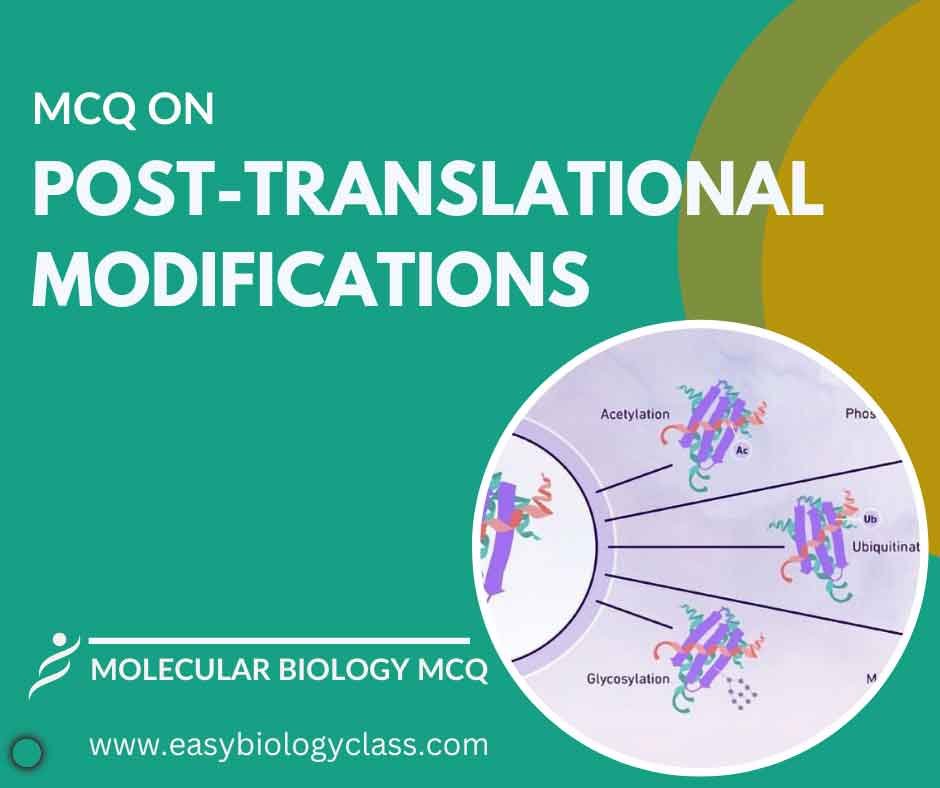1.
Post-translational modifications (PTMs) of proteins occur primarily in which cellular compartment?
2.
Phosphorylation is a common PTM that involves the addition of a phosphate group to specific amino acids in proteins. Which amino acids are frequently phosphorylated?
3.
Acetylation is a PTM that involves the addition of an acetyl group to specific amino acids in proteins. It often occurs on which amino acid?
4.
Glycosylation is a PTM that involves the addition of carbohydrate groups to proteins. Which cellular organelle is primarily responsible for protein glycosylation?
5.
Ubiquitination is a PTM that marks proteins for degradation by the proteasome. What is the small protein involved in this process?
6.
What is the primary role of sumoylation, a PTM involving the addition of small ubiquitin-like modifier (SUMO) proteins to target proteins?
7.
Palmitoylation is a PTM that involves the addition of fatty acid chains to proteins. This modification is often associated with which cellular structure?
8.
What is the primary role of methylation in protein PTMs?
9.
A protein's conformational changes and folding can be regulated by PTMs. Which PTM is known for its role in promoting protein folding and stabilization?
10.
O-GlcNAcylation is a type of glycosylation involved in PTMs. Which sugar molecule is added to proteins during O-GlcNAcylation?
11.
Hydroxylation is a PTM that adds hydroxyl groups to specific amino acids, such as proline and lysine. What is the role of hydroxylation in proteins?
12.
Protein phosphorylation and dephosphorylation are reversible PTMs that regulate many cellular processes. Which enzymes are responsible for removing phosphate groups from proteins?
13.
Protein PTMs play a crucial role in signal transduction pathways. Which PTM often serves as a molecular switch, turning proteins on or off in response to cellular signals?
14.
The addition of a small peptide called a "SUMO tag" to a protein is an example of which PTM?
15.
PTMs play a crucial role in regulating protein function and cellular processes. Which PTM is associated with marking proteins for trafficking to specific cellular compartments?


